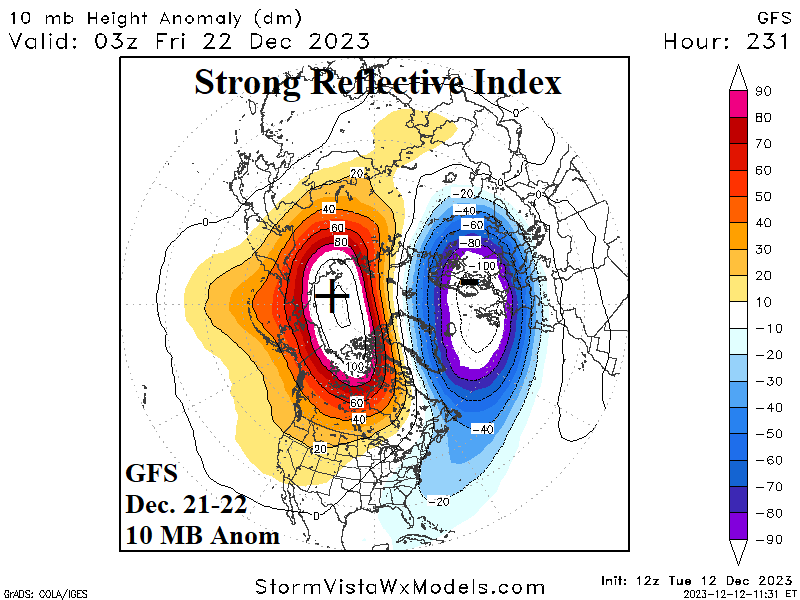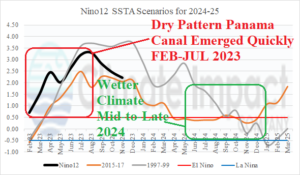
Strong Positive Reflective Index Next Week Supports Major Pattern Change in North America in January
12/12/2023, 8:08 pm EST
Cold Start to December Northern Europe/Western Russia Ends
12/17/2023, 3:55 pm EST
Fig. 1: The Nino12 SSTA analog forecast to help determine climate in Panama Canal region. Acceleration of Nino12 SSTA warmth propelled the drought earlier this year and deceleration is required to reverse the climate pattern wetter.
Discussion: Daily reports of increasing delays and costs for barges moving all types of products through the Panama Canal continue to increase. A rapidly developing drought on Gatun Lake emerging this past February continuing through mid-2023 caused the drought. During that time, the Nino12 SSTA accelerated vigorously to the warm levels rivaled by the 2015 and 1997 El Nino episodes (Fig. 1). The rapidly warming waters inspired heavy convection away from Panama and the compensating atmospheric subsidence dried out Panama and the lack of cloud cover accelerated evaporation rates from the hot tropical sunshine.
The Nino12 SSTA appears to have peaked in August and occasional rains have reached Panama since that time but much more is needed to revitalize the water levels in the Panama Canal. Climate Impact Company estimates that a reliable wet climate will hold off until the Nino12 SSTA is steadily trending cooler toward normal which based on analogs is not likely until the second half of 2024. Trade winds are helping to produce coastal showers at times over the next 2 weeks, therefore some slight short-term relief is possible.
![Climate-Impact-Company-logo-sm[1]](https://climateimpactcompany.com/wp-content/uploads/2023/08/Climate-Impact-Company-logo-sm1.png)
